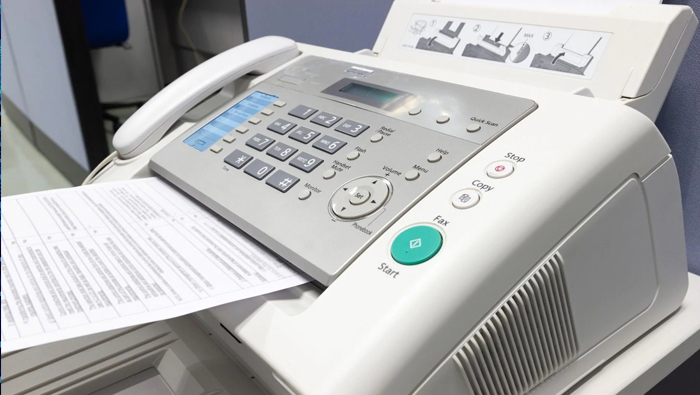There’s a joke where a man wants to send his colleague a fax. The colleague says, “I’m sorry. We can’t receive faxes in our location.” The man asks, “where are you?” to which the colleague responds, “the 21st century.” Yet, here we are. Healthcare is one of the last remaining holdouts of the fax machine. Medical practices routinely use fax to transmit service orders. This is an inefficient way to work. Luckily, alternatives like online service order management offer a more streamlined approach to order management.
Why faxes are still in use
Faxes became obsolete so quickly that we tend to forget how revolutionary the technology was when it made its debut in the 1980s. (It was actually invented decades earlier by Bell Labs, but never commercialized.) Believe it or not, before the “facsimile machine” made it possible to transmit a document over the phone, the only way to get a paper form from one place to another was either by mail or carrying it on foot.
The fax enabled a medical practice to send an order form for a service like an MRI to a hospital or imaging on an instant basis. On the receiving end, the facility would immediately have (hopefully, most of) the information it needed to book a time for the service. A phone (or two, or three…) would allow for confirmations and sorting out any missing data in the process.
This worked, but as digital technologies like email and document scanning became prevalent, the fax started to lose its luster. Why use paper at all? The manual re-entry of order data in the service provider’s scheduling and billing system was still necessary, however. For many facilities, this is about as good as it’s gotten. Faxing, or its digital equivalent, is the still the norm.
The end of faxing for medical service orders
The advent of cloud-based software and browser-based user interfaces have made paper and manual data entry things of the past. Online order management is replacing faxing and email orders. With software like iOrder, the referring physician enters the order data into a browser-based interface. The imaging facility then receives the data in complete form, ready for scheduling and confirmation straight on the computer.
With online order management, there is no need for faxes and phone calls to schedule, confirm and clarify service orders. The process has several added benefits. For example, the order management interface helps the referring physician follow the requirements for diagnostic coding. This reduces billing reviews and payment denials. The overall scheduling process goes more smoothly for the patient, which leads to fewer complaints and rescheduling hassles. And, online order management makes the admin staff on both sides of the service order more productive.
Want to know how you can say goodbye to faxes with iOrder? Let’s talk.




